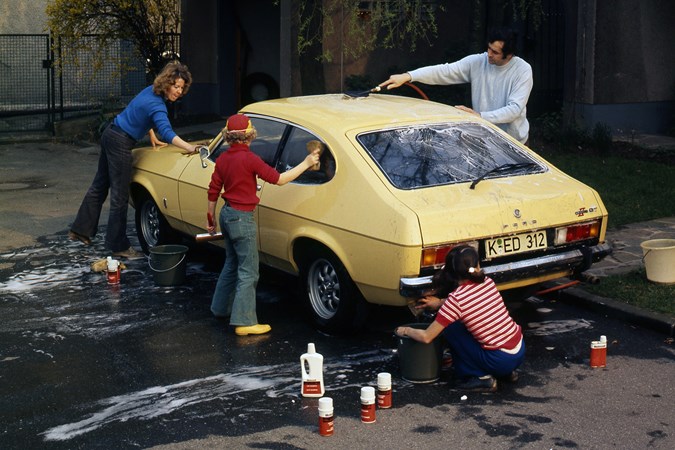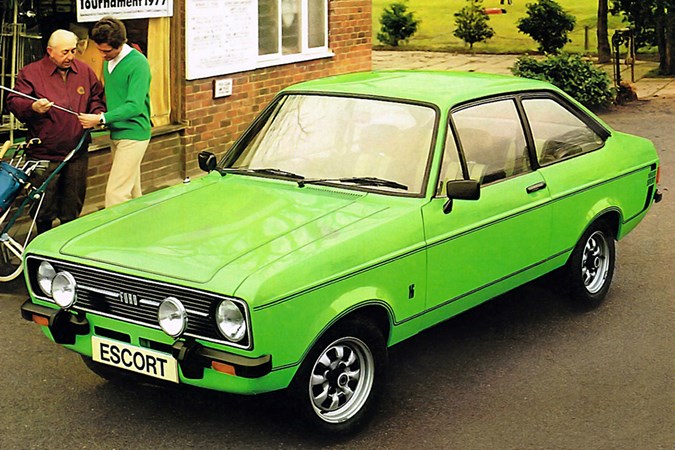
Ford’s first joint European range, introduced between 1962 to 1982, represented affordable, reliable motoring that almost every family in Britain had a connection to right up to the 21st century. Popular and once-cheap models are now sought-after classics, and command higher prices than most of their contemporary rivals.
For those drivers that enjoyed their first driving experiences with Fords there’s easy access to powerful nostalgia, though also, a memory of these cars being cheap. They achieved classic status quickly, and it can be a big investment now to get ‘the car you always promised yourself’.
On the other hand, a classic Ford is a safe purchase, with lots of demand keeping prices on an upward trajectory. Even if it’s not the grade or condition that yields a return on investment, you should be able to enjoy owning a slice of the past without losing money in the long run.
What makes Fords of this era so easy to buy is a consistent approach to engineering. From the Ford Cortina Mk1 to the Ford Capri 280 ‘Brooklands’, the suspension, bodywork, engines and gearboxes look very similar, and they are familiar to most mechanics. Simple visual inspections and mechanical tests will generally tell you all you need to know, though bring a magnet to check that beneath shiny new paint there’s still metal.
Bodywork aside, a 1960s-80s Ford is a wonderful entry to classic car ownership and restoration. There’s a massive community and wealth of knowledge that means a mere car could contribute a lot more to your life than just driving.
How and where to buy a classic car in 2022
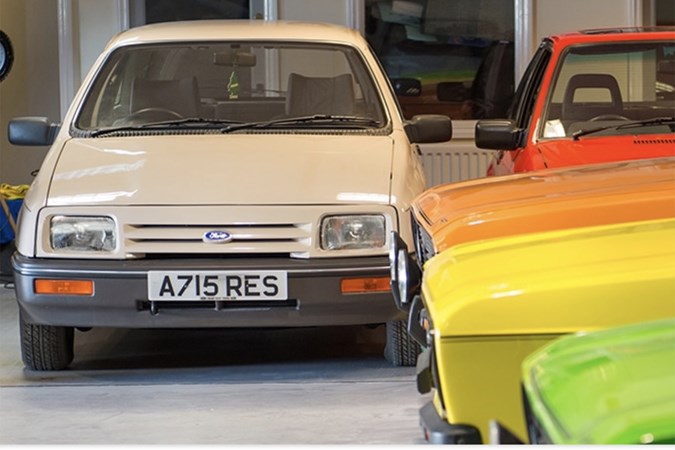
There are, of course, thousands of classic car dealers in the UK, with many specialising in Fords, such as Car Cave Scotland (above). But they get their cars from somewhere, and that’s usually through small ads, auctions and owner’s clubs. Fords are so well known that you’re unlikely to find a bargain from an uninformed owner, but if you’re serious about long-term ownership it’s worth joining one of the model-specific established clubs (such as Capri Club International). They’re a great place to find a documented, well-looked after car, and an owner who cares what happens to it next.
Use Classic Cars for Sale to search online, particularly if you’re open to the idea of importing a car from a drier, salt-free climate, and for a broad variety of owners advertising their cars directly, subscribe to Classic Car Weekly; it’s a weekly print newspaper with old-school classifieds and it puts you in touch with sellers who don’t live online 24/7. Practical Classics also carries adverts, but as a monthly title you really need to buy on the day it’s on sale to snap up bargains.
Some auctions are now so effectively marketed and publicised that you may as well be buying at dealer prices without the certainty of getting your car for your budget. They’re worth watching, but don’t forget the many small auction houses around the UK that handle estate sales and individual lots. Cars are only a small percentage of their turnover but there’s less money and effort spent hyping the lots before sale.
Which classic Ford to buy?
Chances are if you’re thinking about a classic car it’s because you have a connection to it, and already know which Ford you want. If not, and you’re simply considering a Ford as an easy route to owning a classic car generally, they all have quite different characters and personalities which may suit your nostalgic dreams.
The Ford Escort Mk1 and Mk2 (1968 to 1980)
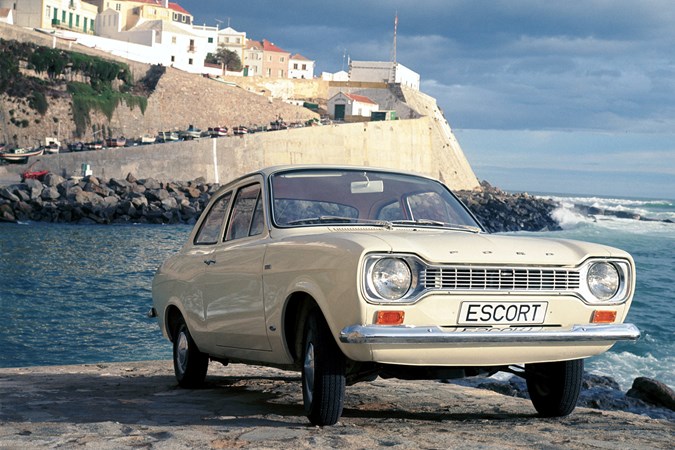
✅ Pros: small, popular and great parts supply, agile handling
❌ Cons: prices are already quite strong, lots of bodged bangers still out there
Replacing the rather quirky – and purely British – Anglia, the Ford Escort was developed to suit a broad range of European tastes, and compete with the Vauxhall Viva and Opel Kadett. It’s probably the easiest classic Ford to own, with great parts availability, instant recognition, and fairly safe handling. Lower-powered models are the archetypal commuter car, with light controls, a gentle attitude and robust nature that is easy to live with. Engines range from 1.1-litres to 1.6-litres, and there are automatic options as well.
There’s surprisingly little between the 1960s original and the last 1980 models from a driver’s perspective, though the dashboard, seats and trim evolve (so choose to suit your own aesthetic) you can swap between the two easily enough. Externally, the Mk1 has curves, a very characterful face (which has small detail changes with trim and year, such as rectangular or round lights) and a lot of satisfying detail. The Mk2 Escort has a more angular look, defined by cleaner lines overall.
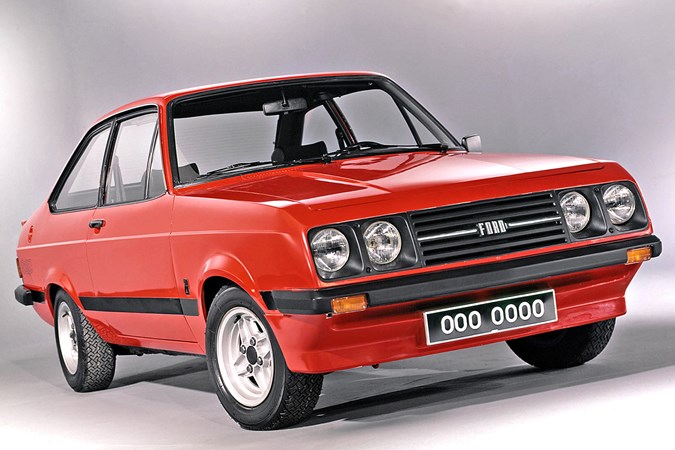
Performance models include the 1300 Sport, Mexico and RS. Rally aficionados recognise the Mk1 Escort’s bubble-arched and twin-cam credentials, but the legendary model is the Mk2 RS2000 (above) which put a relatively big, cheap and simple engine into a bodykitted Escort, so everyday drivers could run and enjoy it.
Sporting Escorts often have uprated and strengthened bodies, so be wary of fakes. Even four-door, non-sporting Mk2 Escorts such as the Ghia can command five-figure prices so there’s a lot of financial incentive for unscrupulous sellers to bodge and polish – these are the cars that dodgy dealers honed their craft on, after all.
Fast Fords tend to attract collectors and investors, and should be bought with specialist advice and knowledge to ensure they’re authentic – but if you have the budget the RS2000 is a thoroughly enjoyable car, and can be driven as enthusiastically as when it was new, safe in the knowledge parts supply and upgrades are readily available. There’s even a modern recreation RS2000, though it costs as much as a Lotus Emira.
The Ford Cortina Mk1 and Mk2 (1962 to 1970)
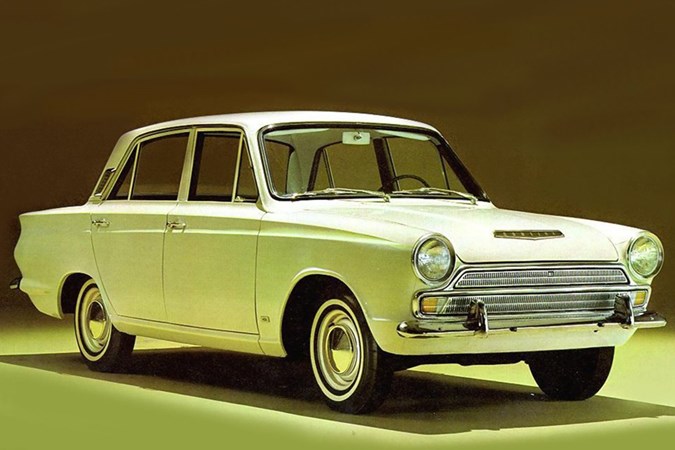
✅ Pros: Lightweight, simple and relatively inexpensive
❌ Cons: Rare now, and rust takes hold everywhere
Early Ford Cortinas were very much a Ford of Britain effort, though they were sold around the world with some particularly interesting models offered in South Africa. Choose a Mk1 and you get ‘60s-chic, slim pillars, the distinctive ‘CND’ tail lights and just a hint of fins. The Mk2 Cortina is more utilitarian, brutalist in shape, a cutting-edge ‘60s look that becomes rather anonymous.
As such, you see surprisingly few Mk2 Cortinas at shows. With short lifespans compared to many cars, these early Cortinas met with commercial success but fell into the shadow of the Mk3 rather quickly.
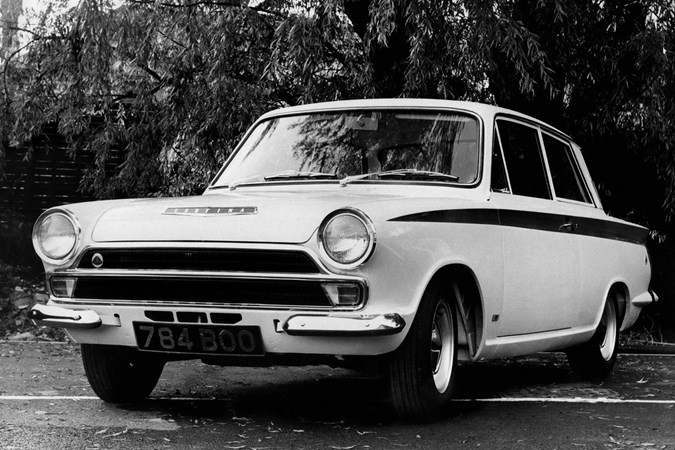
Desirable early Cortinas include the upmarket 1600E and the Ford Cortina Lotus – specialist, high-performance cars akin to the Sierra or Escort Cosworth, the Mk1 was extensively modified beyond simply using a Lotus engine, while the Mk2 was more of a high-performance production model and is less sophisticated. Both are valuable cars, often cloned or copied for replicas, and should be bought with diligence and care.
The Ford Cortina Mk3, Mk4 and MkV or ’80 (1970-1982+)
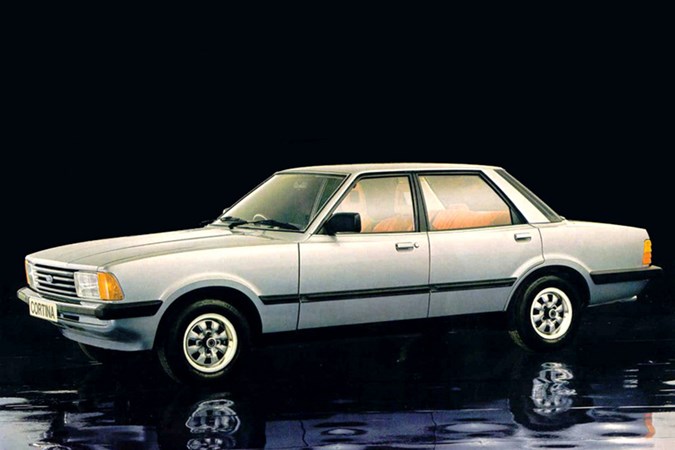
✅ Pros: Very capable cars with rewarding, relatively safe handling
❌ Cons: Banger racers still like them, Mk3s were rusty before the first MoT
Consolidating the technical processes between Ford of Britain and Ford of Germany, the Cortina Mk3 (below) also replaced the Ford Corsair, and was larger, more luxurious and breathtakingly modern. For most drivers, this is the car that defines ‘Ford Cortina’ – it’s the point where you could get serious power in an affordable Ford, the point where trim levels and spec combined with greater company car use (and thus, driveway status), and it doesn’t hurt that it has a striking coke-bottle profile and characterful, recessed grille.
Handling is much improved, as is ride, and access to the rear seats plus the space available is a huge improvement over the earlier cars. UK cars had a choice of four-cylinder engines from 1.3-litres up to 2.0-litres, but other markets got six-cylinder engines and swaps are popular.
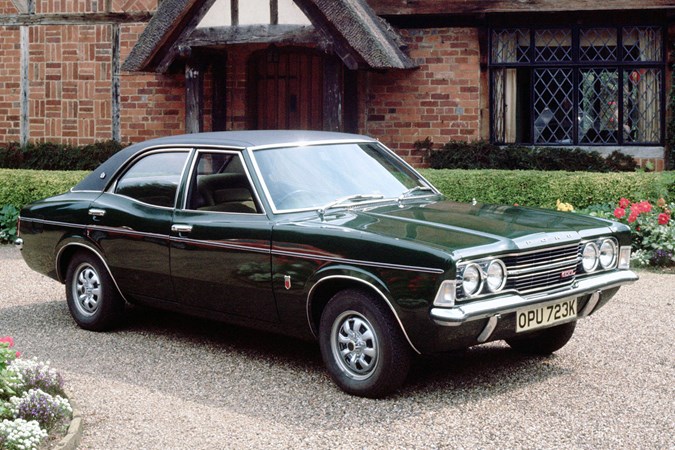
Introduced in 1976, the Cortina Mk4 swapped curves for straight-line simplicity, and gained V6 engines for the UK market. Another bestseller, few survive as it was also popular for banger racing, and those that are available in good condition are over £5,000 for even mundane examples. Many detail changes resulted in the Cortina ’80 facelift, which modernised some of the running gear and introduced more aerodynamic trim, but soon looked ancient next to the futuristic Ford Sierra of 1982.
Cortina MkVs continued to be offered as pickup and estate models for a little while after the Sierra arrived, so late-registration examples do crop up.
Ford Capri Mk1 – 1969-1974
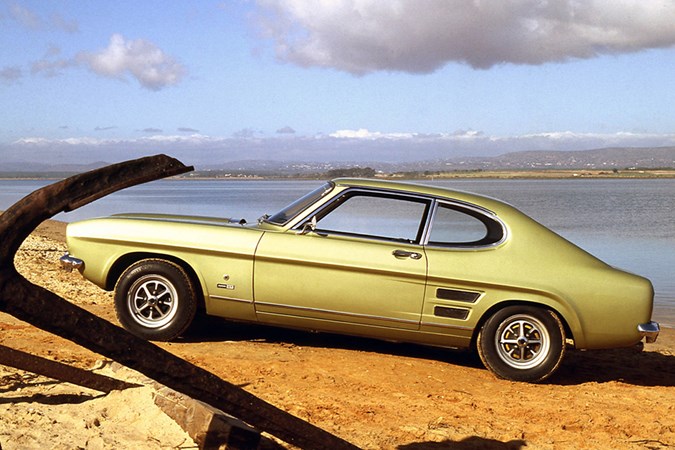
✅ Pros: Iconic image, attention-getting style and low running costs
❌ Cons: Slow or expensive – pick one. Many have been resurrected more than once
Even now, more than 50 years after introduction, the image of the Ford Capri driver persists in Britain. An affordable compact coupe, it was billed as ‘the car you always promised yourself’, and transformed humbled Mk2 Cortina roots into a dynamic-looking two-door family car. V6 models were genuinely quick, but the Capri’s handling was crude and it sold mainly on driveway appeal and value for money.
Appealing to young drivers as a racy, but easy to run first car that turned heads even when skirting the scrapyard, the Mk1 built a reputation in a way its more sensible successors might have struggled to achieve. It’s a classic Ford that’s readily available, if not cheap, and will always be a crowd pleaser. With a few sympathetic upgrades it’s fun to drive, too.
As a rule, the bigger the numbers, the better. GT, XL, XLR and other option packs add details that enhance the Capri’s sporty looks, and of course there are RS models and unusual worldwide versions, such as the South African Perana V8. The easiest Mk1 Capri to live with now is a 1971-on facelift with 2.0-litre ‘Pinto’ OHC, as earlier models have the Essex V4 and smaller engines are underpowered for modern roads (but quite simple to tune).
For a low-budget option don’t be afraid of modified cars – but watch out for rust, bodges and accident damage as these cars brought out the worst aspects of ‘80s used car dealing and ‘90s joyriders. Any car you buy now had to live through that period.
Ford Capri Mk2 and Mk3 – 1974-1986
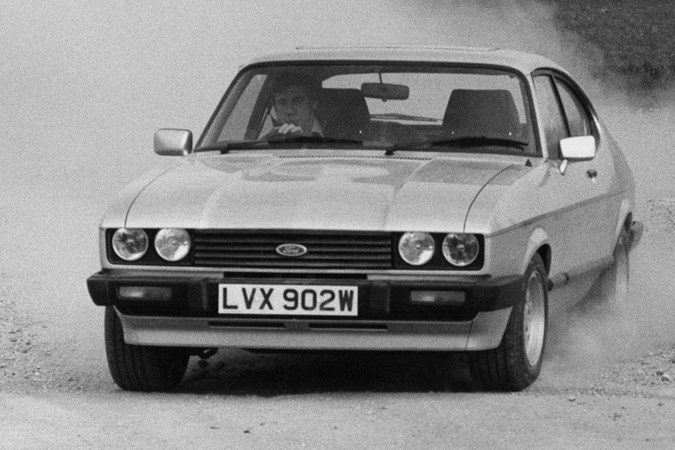
✅ Pros: Massive hatchback, plenty of spares, pre-packaged personality
❌ Cons: Handling and tech outclassed when launched, rivals are better, rust, and unsavoury history
Speaking of used car dealers – the Mk2 Capri was injected into British living rooms thanks to Minder. Unlike the rather menacing nature of the driver Terry, the Mk2’s sensible big square headlights, large hatchback and cleaned-up details seem rather tame, and the 1978 facelift was so successful it’s referred to as the Mk3.
That one got a more dynamic introduction in The Professionals, with aggressive quad-headlight scowl and bold 3.0S (above) stripes updating the ‘60s-derived coupe for the computer age. Little had been done underneath to tame the handling (it still had a solid axle and leaf springs, considered outdated even when the first Capri was launched), but the Mk3 Capri arrived in an era where image was everything; it got the reliable, potent 2.8-litre injected V6, five-speed gearbox, and aspirational ‘Laser’ models. With modern tyres and sympathetic upgrades they can be great fun, yet still extremely practical.
The Mk3 Capri V6 is not only the best mainstream Capri, it’s also the one that will consistently cost you the most – whether a standard 3.0S or 2.8i, or the limited, last edition 280 in Brooklands Green, the market knows the values of Capris well. Buy wisely and you won’t lose money. Find a project and if you have the skills, it may even be worth restoring – but some trim parts are fragile, rare and sought after by a very large group of owners.
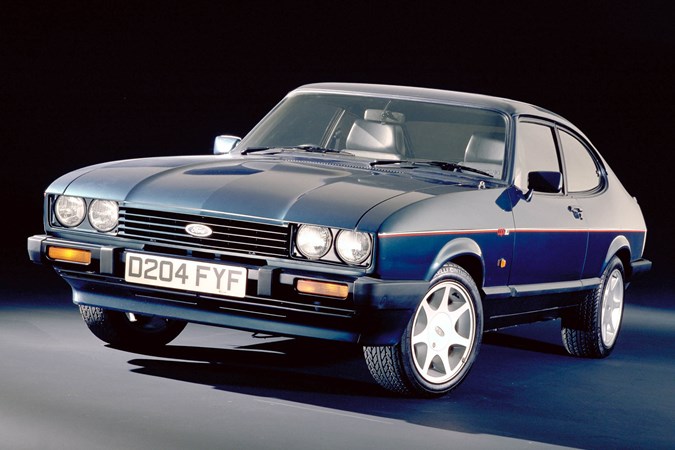
The others – Corsair, Fiesta Mk1, Zephyr, Zodiac and the Granada
✅ Pros: off the beaten path means more chance of bargains
❌ Cons: spares availability, particularly panels or trim, hard to find examples for sale
The popular Fords are easy to buy, but not the only option. For simplicity and a starter classic the Fiesta Mk1 (below) is a charming little box, an early example of a supermini and very easy to work on. Apart from the XR2 and 1.3S models they are still quite affordable, too. Most panels can be repaired but crossmember, bulkhead and inner wing rust can be overwhelming.
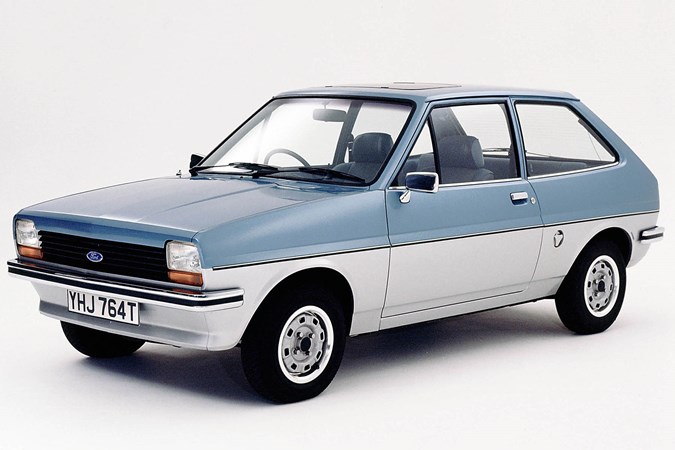
At the other end of modernity, the 1960s Corsair was an upmarket, roomier alternative to the Cortina Mk1. It used V4 engines rather than the old, simple straight four, and is probably best recognised now as a convertible. Its elegant, Thunderbird-esque lines make it the go-to Ford to represent an idyllic 1960s Britain on TV.
Around 75% of the 100 or so Crayford convertibles made have survived, but Corsairs are now very rare cars regardless of bodystyle; lighter panels meant rust really got hold of them before their prime, and later models added through-flow ventilation to get condensation right into the structure. If you can find one for sale it should cost a similar amount to an equivalent Cortina Mk1, with less chance of encountering another at the local car show.
The Cortina Mk3 replaced the Corsair as well, and continued the tradition of premature rust. Fortunately it was sold in more countries in greater numbers, increasing the chances of you finding the right car in the right condition.
Big Fords: Zephyr 4/6/Zodiac Mk4 (1966-72), Consul, and Granada
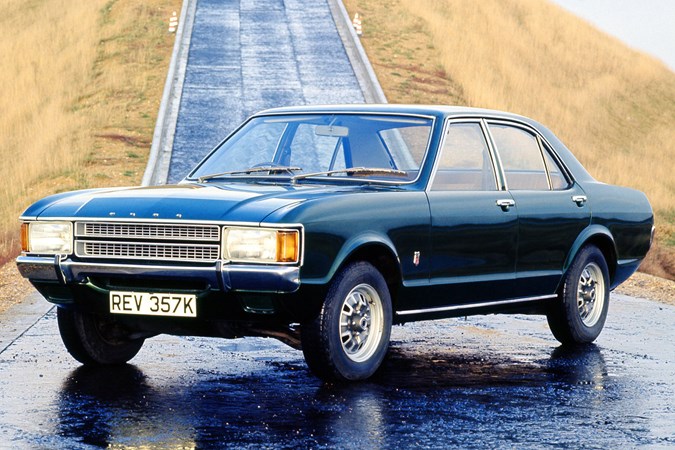
In this company, the uniquely British Zephyr and Zodiac feel like a car from a different era. Huge, slab-sided things, with a long bonnet and stubby boot, this remains one of the cheapest ways to get into a classic Ford. Powered by Essex V4 or V6 engines that were troublesome when new, modern upgrades and expertise means they can be reliable without losing the character of these distinctive cars.
Underneath that very Mad Men/brutalist body was a cutting edge, brave design. Independent rear suspension improved handling, and pioneering 4×4 models were developed. Those are extremely rare now, but despite the efforts of banger racers and iron oxide, there are enough Zephyrs and Zodiacs around to satisfy demand. As little as £3,000 will get a presentable and solid example.
These Fords were so advanced that when consolidating Ford’s German and British big car designs, this was the starting point. Uprated front suspension, a double-wishbone style similar to the Cortina Mk3, added the finishing touch to a refined, safe and quick new era of luxury Fords.
Granada: Ford’s Flying Squad
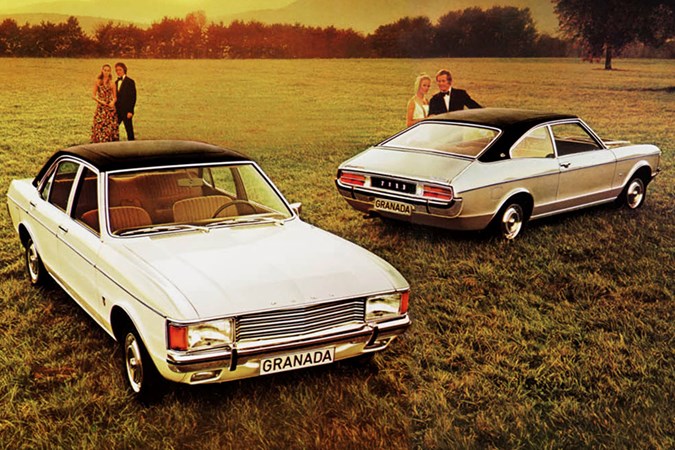
Offered as a fastback coupe, saloon or estate initially, the Granada Mk1 (also known as the Ford Consul for the first few years) evolved, like the Cortina, from a coke-bottle, curvy profile into the angular and imposing Mk2, without a two-door option for the UK.
The Granada Mk2 2.8 Ghia X was mass-produced luxury at its best, and is still a capable and relaxing long-distance cruiser if maintained well. Sadly a lot of Granadas ended a life of circling the then-new M25 with a few circles of the oval, and even as classics a lot of ‘nostalgic’ banger events feature these cars.
As a result Granadas are relatively rare now, and about as affordable as the contemporary Cortina. Repairs and maintenance are much harder, with poor parts availability and few spares available for older models.
Should you buy a classic Ford?
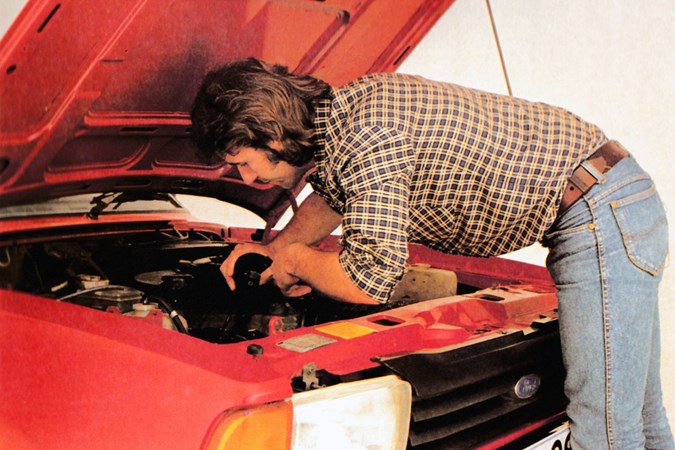
As an entry-level classic, or a way to tap into nostalgia even if you’re not an amateur mechanic or restorer, a classic Ford has always been a safe choice. These days the investment market and bubbles of interest around even mundane models makes them seem like poor value compared to the sophistication, styling and prestige you may get from another marque, but you’re unlikely to lose money or get caught out unable to find vital spares.
More to the point, when you drive a Ford Capri, Cortina or early Escort you tap into the memories of an entire nation; you won’t be able to go anywhere without finding someone who recognises and has a connection to your car. And that’s really what makes driving a classic car so enjoyable – you get to be part of other people’s experiences.
For that, you won’t find a better classic car.
